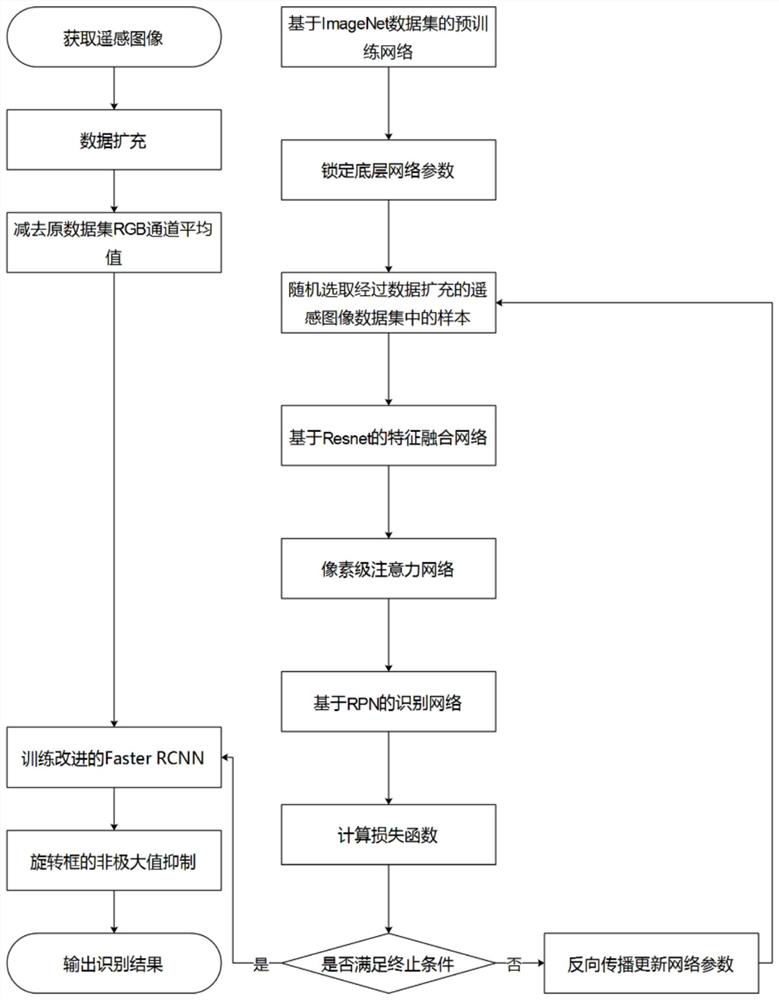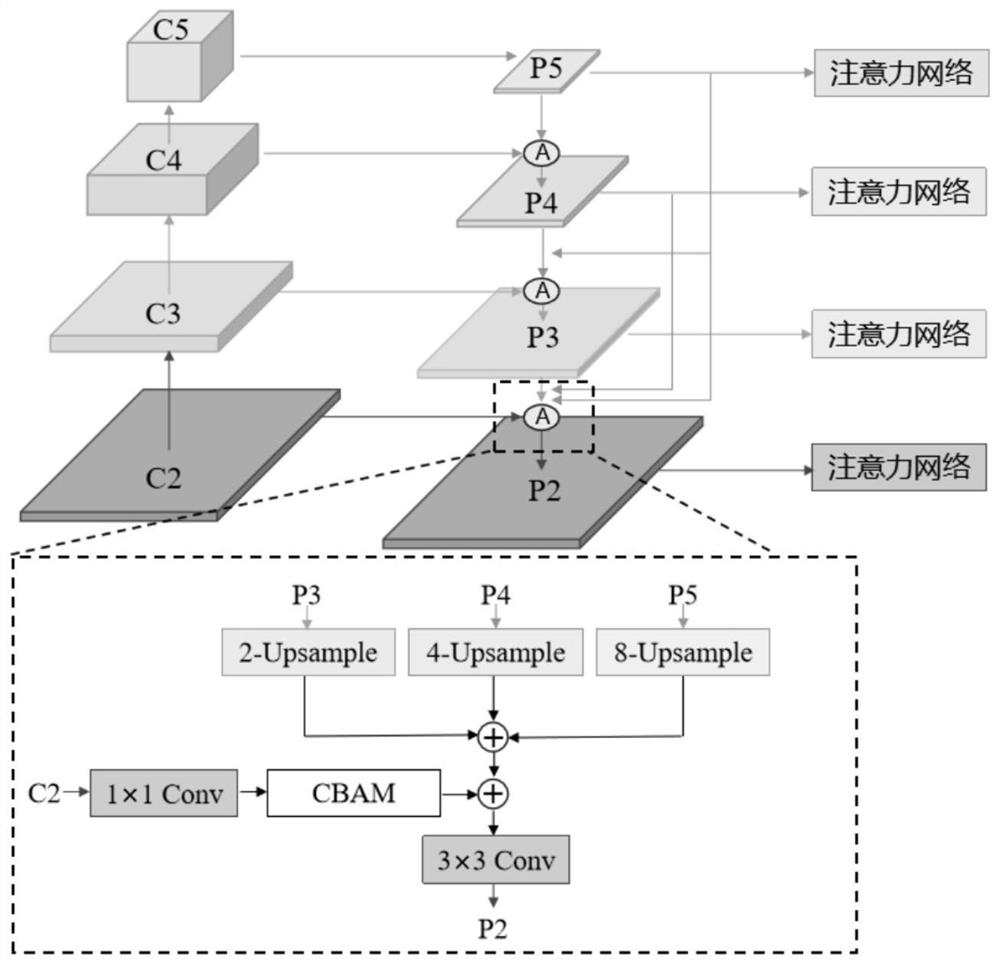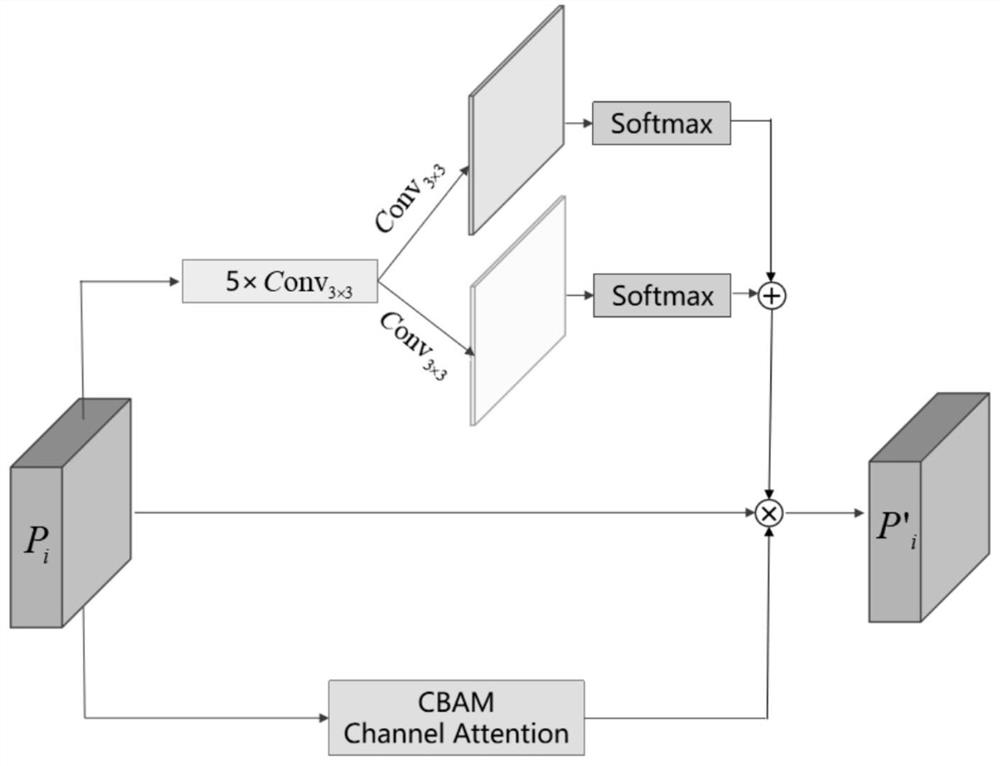Remote Sensing Ship Recognition Method Based on Dense Feature Fusion and Pixel-Level Attention
A feature fusion and attention technology, applied in character and pattern recognition, scene recognition, instruments, etc., can solve the problems of easy overlapping of bounding boxes, dense distribution, and large scale span of ship targets, so as to improve recognition stability and improve Visual effects, the effect of improving recognition accuracy
- Summary
- Abstract
- Description
- Claims
- Application Information
AI Technical Summary
Problems solved by technology
Method used
Image
Examples
Embodiment Construction
[0067] All features disclosed in this specification, or steps in all methods or processes disclosed, may be combined in any manner, except for mutually exclusive features and / or steps.
[0068] Combine below Figure 1 to Figure 9 The present invention will be described in detail.
[0069] A remote sensing image ship target recognition method based on dense feature fusion and pixel-level attention, the flow chart is as follows figure 1 As shown, it specifically includes the following steps:
[0070] Step 1: Divide the acquired remote sensing image dataset into datasets to obtain training sets and test sets, and perform data enhancement on the training set by means of random flipping, rotation, and adding Gaussian noise to reduce the risk of overfitting in the case of small-sample learning ;
[0071] Step 1.1: Divide the data set according to the number of images in the remote sensing image data set. Generally, if the number of images is on the order of 10 4 and below, the t...
PUM
 Login to View More
Login to View More Abstract
Description
Claims
Application Information
 Login to View More
Login to View More - R&D
- Intellectual Property
- Life Sciences
- Materials
- Tech Scout
- Unparalleled Data Quality
- Higher Quality Content
- 60% Fewer Hallucinations
Browse by: Latest US Patents, China's latest patents, Technical Efficacy Thesaurus, Application Domain, Technology Topic, Popular Technical Reports.
© 2025 PatSnap. All rights reserved.Legal|Privacy policy|Modern Slavery Act Transparency Statement|Sitemap|About US| Contact US: help@patsnap.com



